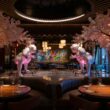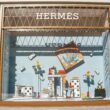Las Vegas has long been a stage for some of the most iconic shows in the world. From the gravity-defying acrobatics of Cirque du Soleil to the soulful residencies of musical legends, the shows that define this desert oasis are more than just spectacles—they are living, breathing testaments to creativity, resilience, and reinvention. While the grandeur of these productions is celebrated far and wide, the hidden stories behind their longevity, the intricate details of their creation, and the personal journeys of the artists who sustain them often remain shrouded in mystery. This exploration unveils the untold tales of Vegas’ longest-running shows, peeling back the curtain to reveal the magic that happens beyond the applause.
The Timeless Allure of Cirque du Soleil
Few names in Las Vegas entertainment carry the weight of Cirque du Soleil. Since its arrival on the Strip, the company has redefined what a live performance can be, blending circus arts with theatrical storytelling in ways that captivate audiences night after night. Among its most enduring offerings is “O,” which has been a fixture at the Bellagio since 1998. For over two decades, this aquatic masterpiece has mesmerized viewers with its synchronized swimmers, aerialists, and a stage that transforms into a 1.5-million-gallon pool. Equally remarkable is “Mystère,” which debuted at Treasure Island in 1993 and remains the longest-running Cirque show in Vegas history. These productions, along with past successes like “Saltimbanco,” “Alegria,” and “Quidam,” showcase an ability to transcend time, drawing generations of visitors into their whimsical worlds.
What keeps these shows alive for so long? The answer lies not just in their visual splendor but in the relentless dedication behind the scenes. Take “O,” for instance. The performers—many of whom are former Olympians or world-class athletes—undergo grueling training regimens to maintain the precision required for their underwater feats. Divers must hold their breath for up to two minutes while executing complex choreography, a task that demands both physical endurance and mental focus. Meanwhile, the technical crew manages a labyrinth of machinery beneath the stage, ensuring the pool’s seamless transitions from solid ground to watery expanse. This interplay of human skill and engineering marvels is a story rarely told, yet it’s the backbone of the show’s enduring success.
“Mystère,” too, has its own hidden chapters. As Cirque’s first permanent Vegas production, it set the stage for the company’s dominance on the Strip. Its longevity stems from a willingness to evolve—new acts, costumes, and music have been woven into the fabric of the show over the years, keeping it fresh for repeat visitors. Backstage tours offered at Treasure Island give fans a rare glimpse into this evolution, revealing the costume workshops where artisans handcraft each piece and the rehearsal spaces where performers refine their craft. These tours, coupled with exhibitions like “Stories From Backstage: Cirque du Soleil in Las Vegas” at the Neon Museum, highlight a growing curiosity about the unseen artistry that fuels these productions. It’s a reminder that the magic of Cirque isn’t just in the spotlight—it’s in the sweat, ingenuity, and passion that linger offstage.
The Personal Journeys Behind the Performances
Beyond the mechanics of the shows themselves, the individuals who bring them to life carry stories that deserve their own spotlight. Consider the aerialist who joined “O” in its early years, perfecting her craft over decades while adapting to the physical toll of nightly performances. Or the clown from “Mystère” who has spent nearly 30 years eliciting laughter, his character evolving alongside the show itself. These performers are more than cogs in a machine—they are artists whose personal triumphs and struggles shape the soul of Vegas entertainment.
One such tale comes from a veteran diver in “O.” In an interview shared through Cirque’s archives, she described her journey from competitive swimming to the Vegas stage. The transition wasn’t easy—learning to perform while submerged required her to unlearn years of instinct and embrace a new kind of vulnerability. Yet, it’s this adaptability that has kept her in the show for over 15 years. Similarly, a “Mystère” acrobat once recounted how a near-fatal injury early in his career forced him to rethink his approach to movement, leading to a signature act that’s now a highlight of the production. These narratives of resilience and reinvention mirror the spirit of Las Vegas itself—a city that thrives on second chances and bold transformations.
The Evolution of Las Vegas Entertainment
The landscape of Las Vegas shows is not a static one. It shifts with the tides of audience tastes, technological advancements, and cultural trends. Nowhere is this more evident than in the realm of magic, a genre that has long been a staple of the Strip. In the mid-20th century, acts like Siegfried & Roy dazzled with their larger-than-life illusions and exotic animals, setting a gold standard for Vegas magic. But as times changed, so did perceptions. By the early 2000s, some traditional magic shows began to feel dated, their reliance on familiar tropes earning them the label of “tired” among critics and audiences alike.
Enter a new generation of magicians, led by innovators like Shin Lim. With his sleek, minimalist style and mastery of close-up card magic, Lim has breathed fresh life into the genre. His residency at The Mirage, which began in 2019, showcases a departure from the bombast of past acts, favoring intimacy and precision over spectacle. This shift reflects a broader evolution in Vegas entertainment—one where authenticity and innovation often trump nostalgia. The rise and fall of certain magic acts offer a microcosm of the city’s ability to reinvent itself, a trait that has kept it a global entertainment capital for decades.
Musical residencies, too, have seen their own transformations. In the Rat Pack era, crooners like Frank Sinatra and Dean Martin ruled the stage with their effortless charisma. Fast forward to today, and artists like Carrie Underwood are redefining the residency model. Her show, “Reflection,” at Resorts World, blends country roots with Vegas glitz, offering fans a polished yet personal experience. Underwood has shared behind-the-scenes glimpses of her process—rehearsals, costume fittings, and the emotional highs of performing for sold-out crowds. These insights reveal the modern residency as a collaborative effort, where artists, designers, and technicians work in tandem to create something timeless yet contemporary.
Burlesque, another Vegas mainstay, has followed a similar arc. Once a risqué novelty, it faded from prominence in the late 20th century, only to resurge in recent years with shows like “Absinthe” at Caesars Palace. This revival blends vintage charm with modern edge, appealing to audiences eager for a taste of old Vegas reimagined. The evolution of these genres—magic, music, burlesque—underscores a truth about the city’s longest-running shows: their staying power lies in their ability to adapt while honoring their roots.
The Role of Iconic Vegas Venues
No discussion of Vegas legends would be complete without the venues that house them. The Bellagio, with its elegant fountains and opulent theater, is more than a backdrop for “O”—it’s a character in the story. The show was designed specifically for its space, with architects and Cirque creators collaborating to build a stage unlike any other. Treasure Island, meanwhile, carries the legacy of “Mystère” as a pioneer, its theater a living archive of Cirque’s early ambitions. These venues are not just buildings; they are custodians of history, their walls echoing with the laughter, gasps, and applause of countless performances.
The Colosseum at Caesars Palace offers another example. Built for Celine Dion’s groundbreaking residency in 2003, it set a new standard for Vegas shows, blending intimacy with grandeur. Since then, it has hosted icons like Elton John and Rod Stewart, each leaving their mark on its storied stage. The technological innovations within these spaces—custom sound systems, advanced lighting, and adaptable sets—have elevated the audience experience, ensuring that the shows remain cutting-edge even after years of performances.
Technology and the Future of the Vegas Stage
As Vegas looks to the future, technology continues to shape its entertainment landscape. The integration of holograms, for instance, has opened new possibilities, allowing legends like Elvis Presley to “perform” decades after their passing. Shows like “The Elvis Presley Hologram Concert” use digital wizardry to recreate the King’s charisma, blending nostalgia with innovation. Similarly, augmented reality elements are beginning to appear in productions, offering audiences an immersive twist on traditional formats.
For Cirque du Soleil, technology has been a quiet partner from the start. The hydraulic systems in “O,” the rigging in “Mystère,” and the projection mapping in newer shows like “R.U.N” (a short-lived but ambitious experiment) demonstrate a commitment to pushing boundaries. Yet, the human element remains central. No amount of machinery can replace the raw emotion of a performer’s leap or the connection forged with a live audience. This balance—between tech and talent—is what will carry Vegas shows into their next chapter.
Unveiling the Hidden Magic of Las Vegas
The enduring magic of Vegas legends lies not just in what we see but in what we don’t. It’s in the countless hours of rehearsal, the unsung heroes of the crew, and the personal sacrifices of performers who pour their lives into the stage. It’s in the evolution of genres, the legacy of venues, and the innovations that keep the city’s pulse beating. By unveiling these hidden stories, we gain a deeper appreciation for the artistry and effort that sustain Las Vegas’ longest-running shows.
Next time you sit in the audience, watching the lights dim and the curtain rise, consider the world beyond the call. It’s a world of grit and grace, of dreams made real through sheer will. And it’s a world that, like Vegas itself, refuses to fade into the night.





